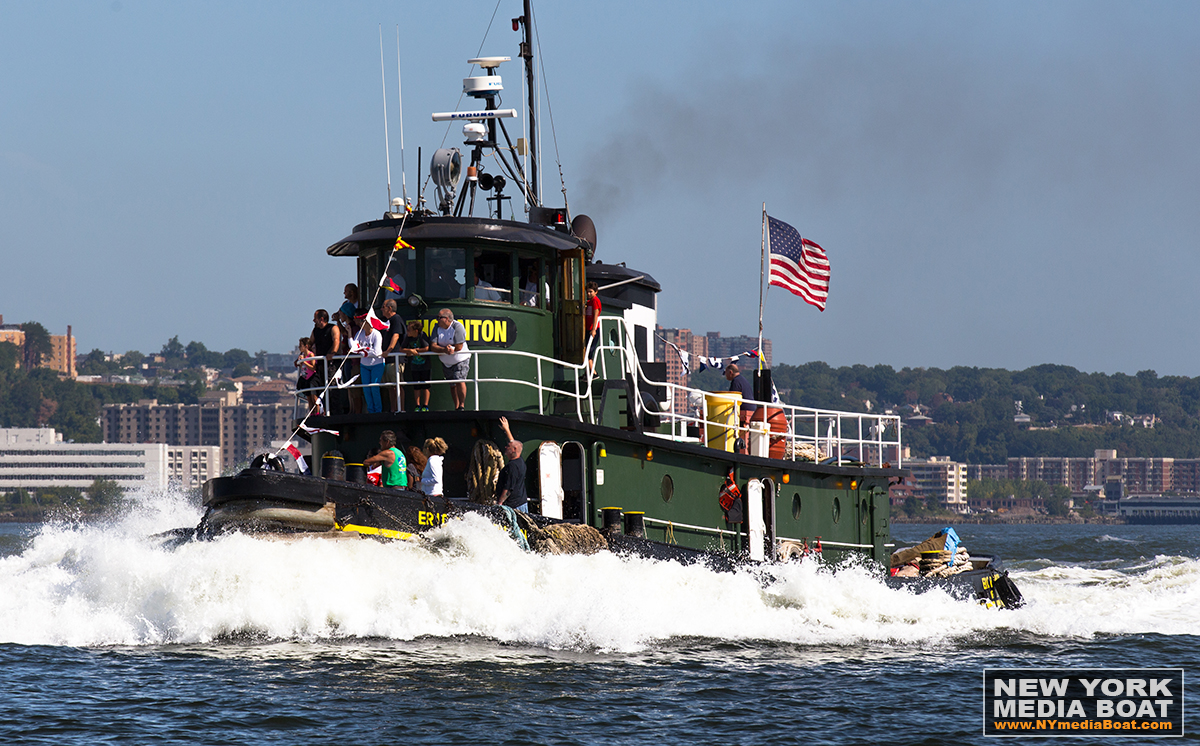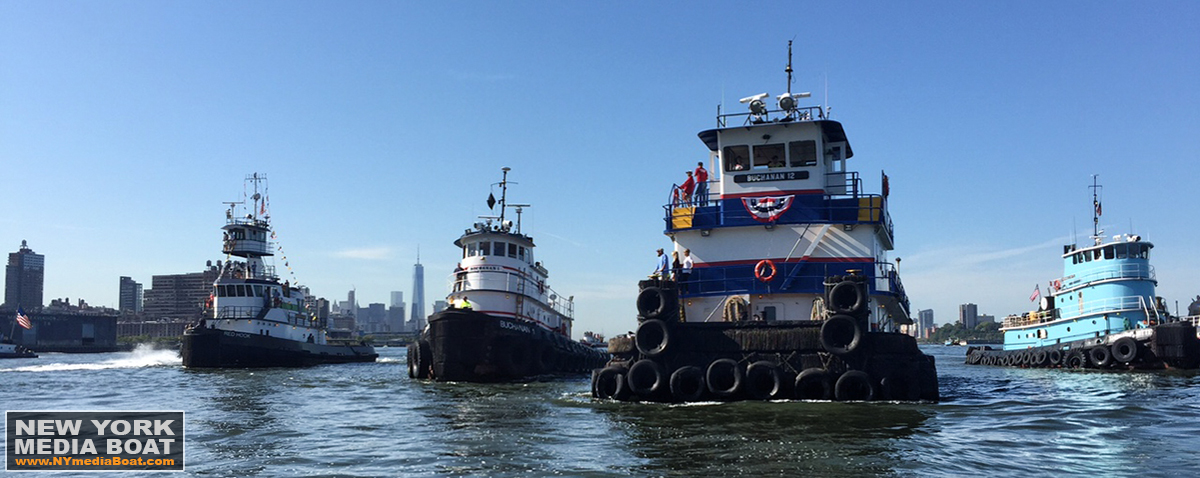You’d be hard-pressed to find someone who would call a tugboat beautiful.
In a harbor full of tall-masted schooners on sunset cruises, custom-built sailboats, and sleek mega-yachts, tugboats are almost invisible, blending into the black and gunmetal gray backgrounds of industrial ports or the barges they tow. The tires that ring their hulls as fenders are reminiscent of mucky Hudson tidal flats where these rubbery doughnuts often come to rest. And it seems a wonder that any vessel with its bow seemingly cut off — like push-boat tugs — can even move water at all.
But when you finally get up close to these workhorses of the harbor, it’s easy to gain an appreciation for their individuality.
Maybe that’s easier when you’re observing them with Will Van Dorp, who runs the blog tugster (see the New York Times profile here) and knows most of the tugboats in the Great North River Tugboat Race by name.
“There’s Patricia,” he says, pointing to a light-gray, three-deck push-boat at the far end of a crowded field of some 20 tugs. Van Dorp has blogged about Patricia before. The first time was when he saw her out the window of a MetroNorth train and recognized her as a new kid on the block.
Almost all of the race entrants have been tagged on tugster at some point, usually observed from one of Van Dorp’s key vistas like the north end of Staten Island, where tugs thread huge barges through the Kill Van Kull.
As we weave through the race field for photos, I start to understand the appeal of tug-spotting.
The Robert E. McAllister is a big red fire engine with its high bow and long tail. The Eric R. Thornton is a hunter-green rain boot. Buchanan 12 is a three-tiered white layer cake with blue and red icing.
The tugs are also windows into how industrial the Port of New York still is. They move barges carrying gravel, salt, crude oil, grain, metals, and dozens of other commodities. Many of them bear the names of companies that started in New York Harbor in the late 19th century — Moran and McAllister, for instance — that in some cases still employ several generations of family members.
Horns blast to signal the race start, and the tugs nose up to the invisible line jutting west off of Pier I. When the countdown ends, they rev into gear and push south with the tide down the river. They throw a foamy white bow wake that completes the workhorse analogy, giving them the wispy white hooves of clydesdales.
Van Dorp is shooting away, and the tugs are flexing for the camera. Some of them look as if they’ve just downed a can of spinach (yes, there was a spinach-eating contest on the pier as part of the festivities) and their rippling muscles are going to send bolts and steel panels flying into the water.
In the tugster post that immediately follows the race, each boat that makes it into a photo is named and tagged, so its participation is on its permanent tugster record. Van Dorp hasn’t expressly called any of the tugs beautiful today — but then again, he doesn’t have to. A blog brimming with tugboat glamour shots says it all.





